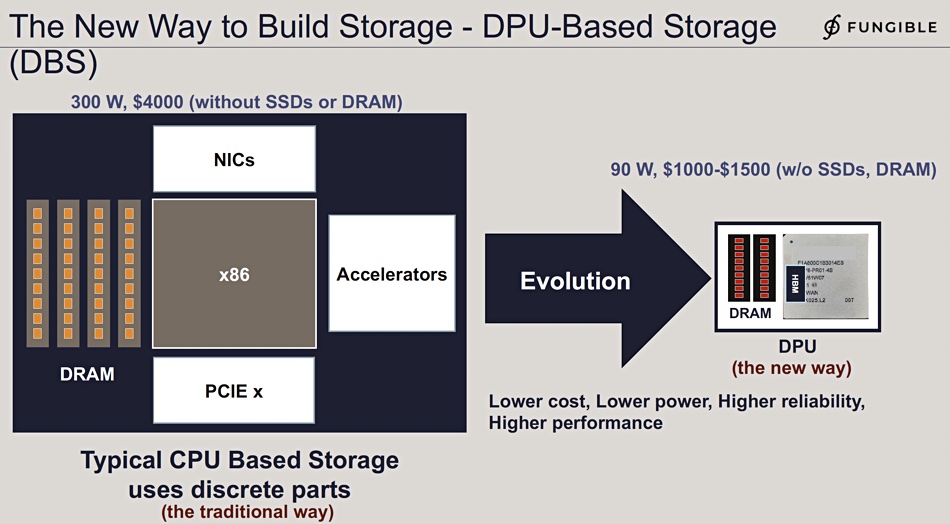Microsoft’s Azure is using MANA smartNICs to accelerate network and storage speed, giving it AWS Nitro-like functions. Users will soon have access to MANA benefits through the upcoming Azure Boost service, currently available for preview.
Update: Fungible acquisition note added. 21 July 2023.
The Microsoft Azure Network Adapter (MANA) is purpose-built system-on-chip (SoC) hardware and software designed to expand network bandwidth, enabling faster and more efficient data transfers. It ensures superior network availability and stability, boasting ratings of up to 200Gbitps networking throughput, remote storage throughput of up to 10GBps, and 400,000 IOPS.

In a blog post by Max Uritsky, Partner Group Program Manager for Azure Host at Microsoft, he states: “Azure Boost is an innovative system that offloads virtualization processes, including networking, storage, and host management traditionally performed by the hypervisor and host OS, onto purpose-built hardware and software.”
By “separating hypervisor and host OS functions from the host infrastructure, Azure Boost enables greater network and storage performance at scale, improves security by adding another layer of logical isolation, and reduces the maintenance impact for future Azure software and hardware upgrades.”
MANA serves as a critical component already implemented within Azure, which Microsoft says provides exceptional remote storage performance for the Ebsv5 VM series as well as networking throughput and latency improvements for the entire Ev5 and Dv5 VM series instances. Specifically, customers can “achieve an industry-leading remote storage throughput and IOPS performance of 10 GBps and 400K IOPS with our memory optimized E112ibsv5 VM using NVMe-enabled Premium SSD v2 or Ultra Disk options.”
The smartNIC effectively offloads storage data plane operations from the host server onto dedicated hardware, resulting in accelerated storage performance and improved disk caching for Azure Premium SSDs. Additionally, it offers an SR-IOV NIC as a virtual function to a guest OS running on Hyper-V.
Uritsky says: “Experimental VMs provided as part of the preview will provide even faster remote storage throughput.”
MANA supports both Linux and Windows operating systems through a set of device drivers, expanding network bandwidth. It also enables network-focused Azure partners and customers to use Microsoft’s Data Plane Development Kit (DPDK) for enhanced hardware access.
With hardware-based secure boot and attestation, MANA ensures robust security, we’re told. Its operating system reduces the potential attack surface, incorporating multiple layers of defense-in-depth. This includes ubiquitous code integrity verification to prevent unexpected code execution and enforcement of mandatory access controls through Security Enhanced Linux (SELinux). The SoC features a FIPS 140 certified kernel for cryptography, providing security levels compliant with federal government standards.
Uritsky says: “Azure infrastructure updates can be deployed much faster by loading directly onto the Azure Boost hardware with minimal impact to customer running VMs on the host servers.“
This reminds us of Nebulon’s functionality delivered to on-premises server fleet users through its SPU (Services Processing Unit).
Azure now has similar hardware and functionality to that provided by AWS’s Nitro card. It invites partners and customers with high-performance network and storage needs, particularly those using the Data Plane Development Kit (DPDK), to take part in the preview. Make a request here.
To learn a little more about MANA, there’s an FAQ here.
Update
Microsoft acquired DPU startup Fungible in December last year for $190 million. Fungible had developed its own Data Processing Unit (DPU) silicon, the F1 chip. The company focussed on storage cluster technology using all-flash arrays controlled by its DPUs with no x86 involvement.

Fungible also built an FS1600 NVMe array storage node product with its own DPU chips replacing standard X86 controllers.

We think MANA is based on Fiungible’s F1 chip and associated firmware and software.








